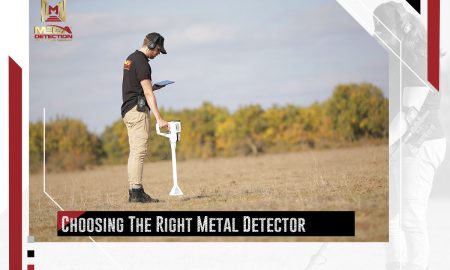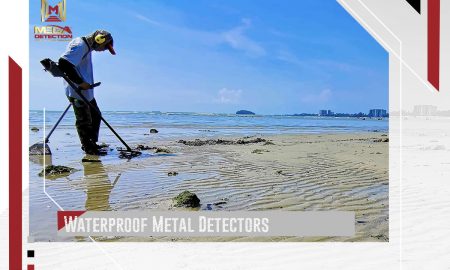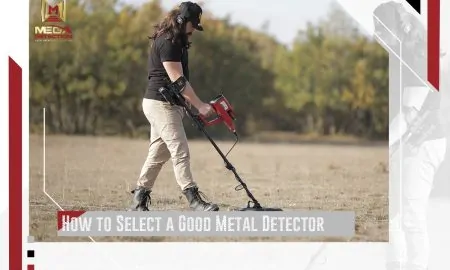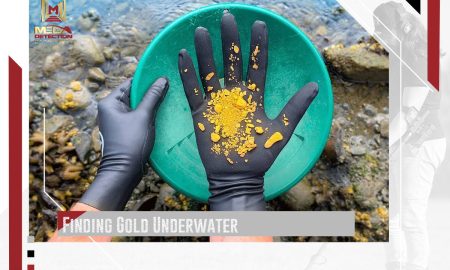Gold Nuggets || Introduction to Metal Detecting for Gold Nuggets
Introduction to Metal Detecting for Gold Nuggets
Gold Nuggets , Most people get started by metal detecting at the park looking for coins and other lost items. Hunting in parks and playgrounds is pretty easy since coins are large targets they are easy to hear.
Looking for gold nuggets is much different. Gold country presents a lot of challenges, the most obvious being that you won’t be casually walking through well groomed grass! We’ll discuss some other challenges below.
One of the most frustrating things about metal detecting for gold nuggets is the huge amount of rubbish that you will find. Even in rich gold country, the ratio of trash to gold can easily be 100-1! You’ve got to dig that trash or you will miss gold, and there really isn’t any way around it.
In most types of metal detecting you can probably use a relatively cheap multi-purpose detector with good results. However, in the goldfields you are going to need a high quality gold-specific metal detector. The average coin detector isn’t going to be able to handle the iron-rich soils that gold nuggets occur in. A cheap detector will give you fits. Even when you are in a known gold nugget producing area, most of the time the gold nuggets themselves are going to be very small. There are countless more sub-gram nuggets than there are big ones.
Beginners usually make the mistake of listening for big, booming sounds from their metal detector. Actually, you want to train your ears to listen to the subtle signal of small gold nuggets. If you only dig the loud targets, you will spend all your time digging up big iron trash targets and pass right over all the gold nuggets.
You’d probably thing that the most important part of gold detecting is getting out there and hunting hard, but it’s actually the research that you do before you leave the house that will make the most difference. Now don’t get me wrong; to be successful at metal detecting for gold you will need to work hard. But you also need to make sure you are hunting in a place that has gold nuggets.
To find these areas you need to read books and literature about the early mining in your area. Make note of areas where the old-timers were mining. You can go there and still find gold today.
You are going to have a lot more success at this hobby if you are in good physical condition. You are going to do a lot of hiking, and digging holes all day can wear anybody out. Now that isn’t to say that you have to be very good to be successful. I know plenty of guys in their 60s and 70s who are still digging lots of gold, but they are still fit and in good shape.
Check you expectations before you get started in this hobby. There are some guys that find a lot of gold, and there are even a handful of guys out there who do it for a living, but it is a hard living.
Beginners often have dreams of big gold nuggets and piles of gold. The reality is that you will spend days and days out in the field without even a crumb of gold to show for it.
Metal detecting for gold is a lot of fun, but to truly do it for a living, expecting to replace a 40 hours-per-week job simply isn’t going to happen. Especially not for a beginner with little to no experience.
As you gain more experience, you will probably start finding more and more gold. You will learn to identify indicators, both natural and man-made, that will lead you to productive mining areas.
Even with a lifetime of experience, you will still get skunked sometimes. Maybe another prospector already beat you to the spot and dug up all the gold nuggets? Or perhaps the area just doesn’t have any large, detectable gold nuggets. Believe me, sometimes the best looking areas sometimes come up empty.
One thing you will find out pretty quickly is that some of the best areas that you want to explore are either on private lands or they are already claimed by another miner.
Metal detecting for gold is one of the most exciting hobbies there is. I’ve always felt that the rush we get from actually finding treasure is something that is part of our DNA. We tell stories about it and dream about it when we are kids.
While the likelihood of discovering a pirate’s booty probably isn’t too likely, finding gold nuggets is absolutely possible and prospectors are doing it every day!
Unearthing a gold nugget that has been hidden for millions of years is a rush unlike any other. I wouldn’t discourage anyone from getting into this great hobby.
At the same time, I like to give people a real expectation of what they can expect rather than some fantasy. Some of the points above might seem a bit “sobering,” but I’m here to tell you that you can go out and find gold nuggets with a metal detector.
Specifications that the Best Gold Detectors 2022 should have
1. Coil Configuration
The coil is one of the most important parts, it controls many detection variables like the:
- Frequency
- Sensitivity
- Discrimination
You need to understand that the coil should have one of these configurations:
- Double-D coil: also called DD coil, it has a form of 2 reversed overlapping D’s. This one operates very well for highly mineralized soil and could reach high depth even for small targets.
- Concentric coil: It has 2 circles, one inner and one outer. This one usually doesn’t operate ideally for mineralized soil, yet it allows strong pinpointing capabilities.
- Monoloop coil: This one is pretty special and used for Pulse Induction machines. Maybe this is not a good beginner option, yet it is interesting to know about it. The signals coming from these types of search coils are generally very high in terms of frequency and could operate on heavy mineralized soil.
2. Coil Size
The diameter of the coil is directly proportional to the depth of the search! In other words, if the coil is large, this means that it could go to a high depth (above 9 inches).
A medium sized coil allows you to go generally between 7 to 9 inches. And for the small ones they won’t allow you to go deeper than 6 inches! So, that’s it, if you are expecting deep targets, you can opt for machines with larger coils, otherwise, you may want to only have a smaller one.
3. Discrimination
The best Gold Detectors machine should have some sort of discrimination capability! This feature simply means the ability to ignore the metals that you are not looking for …
… For examples, it is common to find aluminum caps while detecting, this happens all the time…
… By setting the proper discrimination setting, your device won’t pick up those signals and you will only dig for the good stuff!
4. Sensitivity
It simply means how capable your machine to pick up smaller targets is. Or how sensitive is it to small targets!
So, if you are looking for regular sized targets, then you may not need a machine with high sensitivity. Otherwise, if you are looking for little gold nuggets, for example, then you should definitely have a detector with high sensitivity.
5. Operating Frequency
Each metal detector operates on a frequency or a set of frequencies! This generally influences both sensitivity and depth , In other words, when the frequency is low, your machine tends to be less sensitive to smaller targets, but it can go deeper. On the other hand, when the frequency is high, your machine will be able to react to the small items, but it won’t go very deep.
6. Target ID
This is a feature that will help you to identify your target! Based on that you will be able to decide on the value of the detected object! Generally, you should opt for a detector that offers a wide range of target ids. Thus the recognition will be much easier …












Leave a Reply